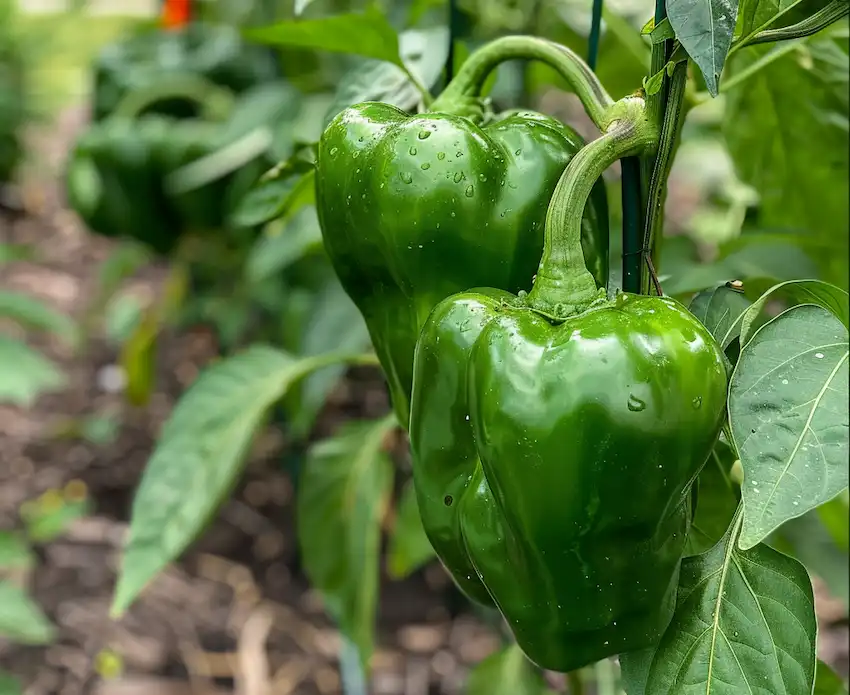Pruning Pepper Plants: A Comprehensive Guide to Maximizing Your Harvest
Pruning pepper plants can significantly enhance their health, yield, and overall quality. While it may seem counterintuitive to cut back your plants, strategic pruning promotes robust growth and increased fruit production. This article offers a complete guide on how and when to prune pepper plants for optimal results.
Why Prune Pepper Plants?
1. Enhanced Air Circulation
Pruning improves air circulation, reducing the risk of fungal diseases. Better airflow allows leaves to dry quickly after rain or watering, minimizing disease potential.
2. Increased Sunlight Penetration
Removing excess foliage lets more sunlight reach the inner parts of the plant. This ensures all leaves can photosynthesize efficiently, boosting overall growth.
3. Encouraged Bushier Growth
Pruning encourages pepper plants to grow bushier rather than taller, resulting in a more compact plant with more branches, leading to increased flower and pepper production.
4. Better Fruit Quality
By focusing energy on fruit development instead of excessive foliage, pruning leads to larger, healthier peppers in terms of size, flavor, and texture.
When to Prune Pepper Plants
1. Early Growth Stage
Start pruning when the plant is about 6-8 inches tall and has at least 4-6 true leaves. Early pruning shapes the plant and establishes a strong foundation for future growth.
2. After the First Fruits Set
Once the first set of fruits forms, light pruning can help redirect energy from foliage to fruit development. Avoid over-pruning at this stage to ensure sufficient leaves for photosynthesis.
3. Mid to Late Growing Season
Perform light pruning throughout the growing season to remove damaged, diseased, or overcrowded branches, helping keep the plant healthy and productive.
4. Before the End of the Season
About a month before the expected first frost, consider topping off the plants to encourage the final set of fruits to mature. This involves cutting off the top growth to redirect energy to ripening existing fruits.
How to Prune Pepper Plants
Gather Your Tools
- Sharp pruning shears or scissors
- Gloves for protection
- Disinfectant (e.g., rubbing alcohol) to sterilize tools
Early Pruning Steps
- Remove Early Flowers: Pinch off any early flowers when the plant has about 6-8 true leaves. This encourages the plant to focus on strong root and foliage development.
- Top the Plant: Once the plant reaches about 6-8 inches in height, pinch or cut off the topmost growing tip to encourage branching and bushier growth.
Mid-Season Pruning
- Identify Suckers: Remove suckers (small shoots at the junction of the main stem and branches) to prevent overcrowding and improve airflow.
- Thin Out Foliage: Remove any leaves touching the ground or overcrowding the center. This reduces disease risk and ensures sunlight can penetrate.
- Prune Damaged or Diseased Branches: Regularly inspect for any damaged or diseased branches and remove them promptly.
Late-Season Pruning
- Top Off the Plants: About a month before the first expected frost, cut off the topmost growth to focus energy on ripening existing fruits.
- Remove Remaining Flowers: If there are flowers or undeveloped fruits, consider removing them to help existing peppers mature before the end of the season.
Additional Tips for Pruning Pepper Plants
1. Consistent Pruning
Regular pruning helps maintain plant health and productivity. Focus on light, consistent pruning rather than heavy pruning to avoid stressing the plant.
2. Fertilization
After pruning, give your plants a nutrient boost with a balanced fertilizer. Look for equal parts nitrogen, phosphorus, and potassium, or use organic options like compost.
3. Watering
Maintain consistent watering practices. Peppers need regular, deep watering for strong roots and juicy fruits. Avoid overhead watering to reduce fungal disease risks.
4. Pest Management
Monitor for pests such as aphids and spider mites. Use organic methods like neem oil or insecticidal soap to keep populations in check.
5. Mulching
Apply mulch around the base to retain moisture, suppress weeds, and regulate soil temperature. Organic mulches like straw can also enrich the soil as they decompose.
6. Supporting the Plants
As your plants grow, they may need support to prevent branches from breaking under fruit weight. Use stakes, cages, or trellises for support.
Conclusion
Pruning pepper plants is a valuable technique for maximizing production and ensuring healthy, robust plants. By understanding when and how to prune, you can enhance air circulation, improve sunlight penetration, encourage bushier growth, and produce better quality fruits. Regular, consistent pruning combined with proper care practices will lead to a bountiful harvest of delicious peppers.
For further reading and expert advice, consider consulting gardening books, university agricultural extensions, and reputable gardening websites for tailored recommendations based on your specific growing conditions and pepper varieties.
Happy gardening!
